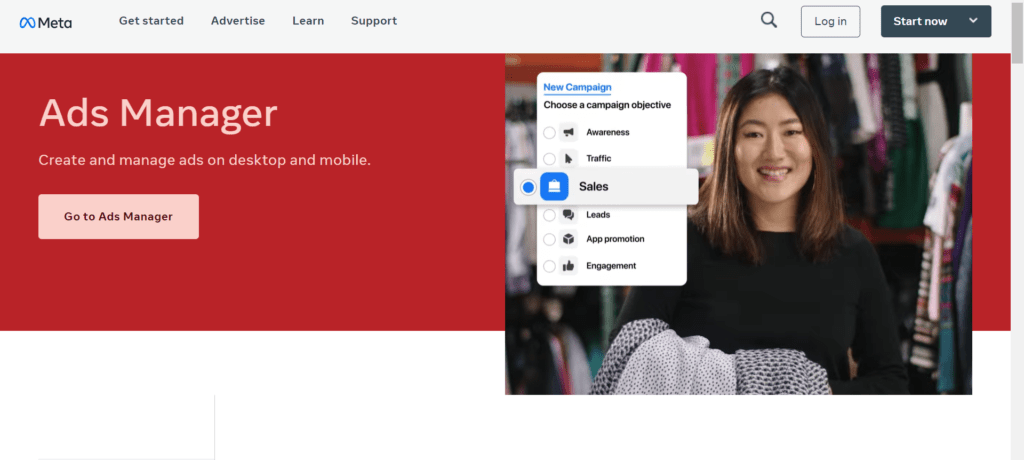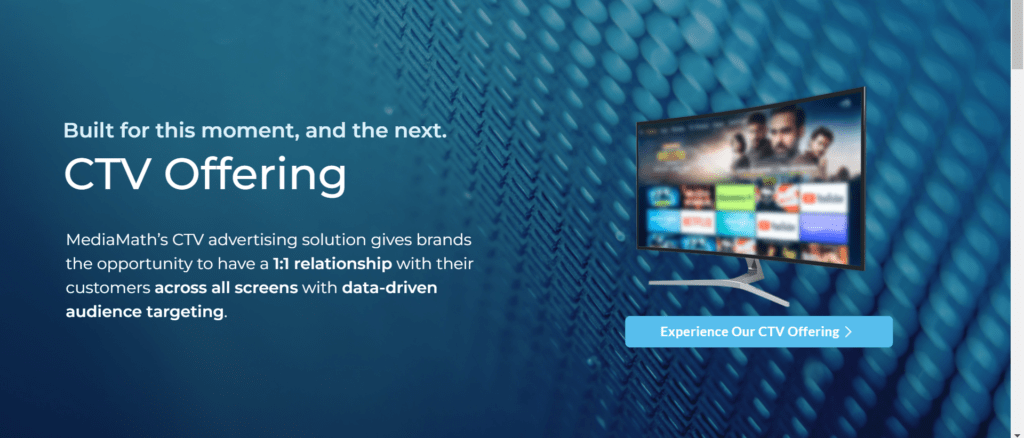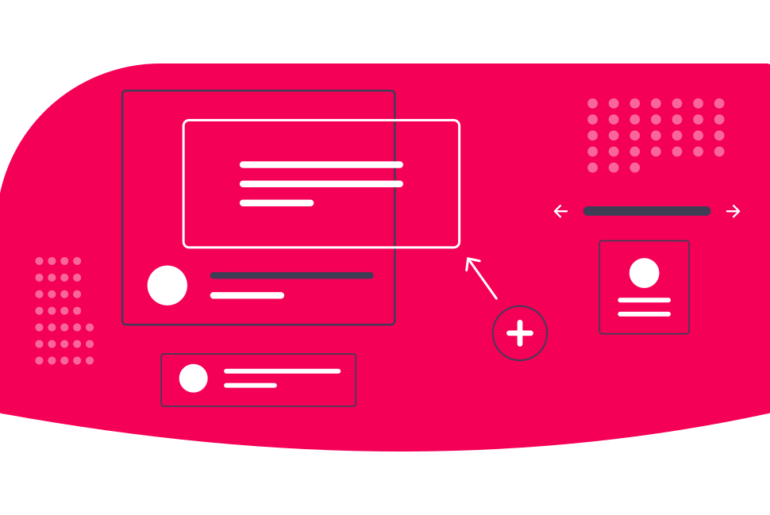What is a Demand-Side Platform? Find out how advertisers use DSPs to purchase digital ad space across multiple platforms, target specific audiences, and optimize campaigns in real-time. This blog covers every nitty-gritty detail of DSPs.
Digital advertising is not just about an advertiser placing an ad creative on a publisher’s website. It involves platforms on the sell-and buy-side constantly working to maximize the advertiser’s ROI and publisher’s revenue.
So, in order to find the perfect inventory for their creatives and the perfect ads for their inventory, both buy-side and sell-side work with different platforms. One such platform is DSP or demand-side platform.
The demand side platforms are increasingly becoming popular. The global demand-side platform market is expected to grow at a CAGR of 26.15% between 2023-2028. The report also identifies key players in the demand side platform market, including:
- Google (Google Ad Manager)
- Adobe
- Centro
- Amazon Advertising
- Roku (Dataxu)
The list goes on. So without further ado, let’s dig deeper into the demand side platforms and understand what all they have to offer.
Also Read – Demand Side Platforms (DSPs): How Are They Evaluated?
What is a Demand Side Platform?
Have you ever wondered where advertisers find the ad space to promote their products/services? It’s demand side platforms that make it possible. By using a demand side platform, advertisers gain access to a marketplace where they can purchase mobile, search, and video ad inventory that is listed by publishers.
On top f that, demand-side platforms are also responsible for managing real-time bidding for advertisers and they also keep them informed by sending them updates about upcoming auctions.
How Demand-Side Platforms (DSPs) Benefit Publishers?
DSPs help publishers fill their ad space by connecting them with a wide range of potential buyers and managing real-time bidding for them.

They also provide publishers with valuable data insights about their audience, such as demographics and interests, which can help publishers refine their ad targeting and increase revenue.
Now that we’ve defined what a demand-side platform (DSP) is, let’s explore why advertisers need them.
Why Do Advertisers Need Demand Side Platforms?
Back in the day, publishers and advertisers used to deal one-on-one. In such deals, they used to discuss and negotiate deals. If both parties agreed, an insertion order was signed and then the ads were placed. This was a time-consuming process, and the negotiation was not always appreciated by both parties.
There was a need for a mediator to conduct the exchange without wasting time and striking a good deal for both parties at the same time. So, the industry evolved and we got DSPs, along with SSPs, and ad exchanges.
Read More: Top 15 Supply Side Platforms (SSPs) For Publishers in 2023
The demand-side platform quickly took charge of managing the buyer’s requirements, resulting in profitable campaigns for them.
Explaining How Does a DSP Work?
Advertisers experience strong competition while bidding for impressions. At this point, it falls down on the DSP to fight on their behalf and win the ad impressions.

Here is how DSPs work :
1. Real-Time Bidding in DSPs
In real-time bidding, the auction starts when a user opens a web page to check the site’s content. The entire bidding process takes hardly a few milliseconds. But there is a lot that happens in these milliseconds—from a user clicking on the site link to him/her seeing an ad on the screen.
2. Designing an Ad Campaign with a DSP
On the demand side, it starts with the advertiser designing an ad campaign with the DSP. For instance, if an advertiser wants to target users between the age group of 20 to 40 who use Windows OS and are interested in learning programming languages, he/she can create the campaign based on these specifications and demographics.
3. DSPs Receive User Data and Participate in Ad Exchanges
After receiving the campaign instructions, the DSP actively starts looking for such users by contacting multiple ad exchanges. If a target user appears, the SSP quickly forwards the user’s data to the ad exchange and asks it to find a creative that would be relevant for the user.
4. Conducting an Auction and Placing the Winning Bid
The ad exchange then contacts the DSPs looking for users with such specifications and conducts an auction. The winning bid is selected based on the floor price set by the publisher and the creative is placed. Here, the DSP bids on behalf of advertisers, based on the set budget.
Similarly, advertisers set up multiple campaigns in order to market their products, and increase leads and conversions. And each campaign follows the same process involving a DSP.
What Are the Main Components of a DSP?
There are multiple components that work together to make a demand-side platform. Let’s have a look.
User Interface
Just like any software, website, or app, the interface is the front end of a demand-side platform. It allows the user to interact with the platform, set up campaigns, and manage their ad inventory.
Ad Exchange Integration
Next, DSPs are integrated with ad exchanges, and this allows the platform to access and purchase ad inventory from many different sources.
Real-time Bidding (RTB)
DSPs utilize real-time bidding in order to bid on available ad inventory in real-time. The bidding process is automated, and there are certain algorithms set forth, which determine the optimal bid price based on the targeting and objectives of the campaign.
Data Management Platform (DMP)
DSPs can integrate with data management platforms to leverage data insights and audience targeting capabilities, allowing advertisers to deliver more personalized ads to specific audiences.
Reporting and Analytics
A DSP also provides detailed reporting and analytics on campaign performance, allowing advertisers to track and optimize their campaigns based on key performance indicators (KPIs) such as impressions, clicks, conversions, and ROI.
While you will be provided with this much information, it will be restricted to certain metrics set forth by the platform. Not to mention, these reports are only going for the ad campaigns that you will run for that platform.
Targeting Capabilities
Lastly, demand-side platforms also come with targeting capabilities that let advertisers target their ads to specific audiences based on a variety of criteria. These include demographics, interests, behavior, location, and more.
All of these components of a DSP work together to provide advertisers with a sophisticated tool for managing and optimizing their digital advertising campaigns.
By now, you might have understood what a demand side platform is, how it works, and the components that make it. But there’s more to know. There are multiple types of DSPs as well, so let’s quickly delve into them.
Also Read – Ad Targeting: A Publisher’s Guide (with Pros And Cons)
5 Best DSP Platforms to Opt in 2023
If the question – “what is a demand side platform?” still leaves you perplexed, let’s understand it with an example.
If a company offers products and services related to fitness, it would require a relevant audience that has shown interest in similar products. With the help of DSP, they can set up a programmatic ad campaign, which will help them target the users who have shown interest in fitness-related content across several sites and apps.
Demand side platforms utilize real-time bidding and optimization to make sure that the brand’s ads are being shown to the most relevant audience at the right time and place. This results in a higher conversion rate.
Here is a quick overview of the top 5 DSP you can opt for in 2023.
Facebook Ads Manager

Starting our list with one of the most popular DSP platforms, Facebook Ads Manager acts as a one-stop-shop platform for advertisers. It allows them to create, edit, track, and manage their ad campaigns. Facebook’s DSP holds a lot for advertisers as Facebook has now made it to the mark of 2 billion active monthly users.
Google’s Display & Video 360

Back then, Google came up with DoubleClick, which offered a suite of ad management and ad-serving solutions, which has now been rebranded. It is now a part of Google’s efforts for simplifying its ads and analytics offerings. As a result of this consolidation, the DoubleClick brand was retired and its products were then integrated into the Google Marketing Platform and Google Ad Manager.
One of the products that were integrated into the Google Marketing Platform is Display & Video 360, which is a demand-side platform (DSP) for programmatic advertising.
As a DSP, Display & Video 360 allows advertisers to purchase ad inventory across multiple ad exchanges and supply-side platforms (SSPs) using real-time bidding (RTB) technology. With Display & Video 360, advertisers can create and manage display, video, and native ad campaigns from a single platform. Not only that, there’s a lot more that it offers.
MediaMath

Next in the list is MediaMath, which is being used by many renowned organizations across the globe. The platform accounts for being used by the two-third of fortune 500 companies. One of the best things about MediaMath it provides a holistic perspective on numerous features that enhance the effectiveness of potential ad designs.
Furthermore, the DSP also takes pride in its commitment to transparency, offering users complete access to their data and a range of customization options. Additionally, the platform provides a team of skilled experts who can assist with campaign setup and ongoing maintenance to ensure optimal performance.
Amazon AAP

Amazon’s Amazon Advertising Platform (AAP), which has been dubbed as the enigmatic player in Ad Tech, provides a powerful solution for advertisers who are looking forward to expanding their reach.
Known for its elusive business practices, Amazon has been tight-lipped about the specifics of this DSP. However, it is widely acknowledged that advertisers can leverage this tool to connect with Amazon shoppers on multiple platforms, including Amazon sites, the web, and mobile applications.
Choozle

Last but not least in the list is Choozle, which is commonly known to blend user experience with first-in-class tools. The platform comes integrated with an array of features. This includes powerful targeting, buying and execution, design-focused capabilities, and the list goes on.
Choozle is a platform that makes it possible for the marketers to get access to as many programmatic impressions as possible.
Choozle’s advertising service helps clients allocate a larger portion of their advertising budget towards media spending by removing unnecessary costs, technology, and complicated processes. This is something enables clients to put their focus on the most impactful aspects of their advertising strategy at the same time minimizing expenses and maximizing their return on investment.
What Are the Types of Demand-Side Platforms?
There are mainly two types of demand side platforms – Self-serve and Full-service. Let’s take a closer look at both of them.
Self-Serve
As the name suggests itself, self-serve is the kind of demand side platform that allows advertisers to manage all of the ad operations on their own. All of the responsibilities are given to the advertisers, which generally include coming up with ideas, strategies, analysis, and list goes on.
A self-serve DSP can be a cost-effective solution for advertisers, as it reduces overhead costs and provides them with full control over their campaigns. However, to what extent it is easy to use depends on the level of in-house expertise and experience.
Full-Service
Full-service demand side platforms, on the other hand, save you time and effort. It takes responsibilities off the shoulders of advertisers by having an account manager do it all. Apparently, advertisers need to pay for the service for every campaign they launch.
Although full-service DSPs can take a toll on small-scale advertisers’ budgets, it lets them outsource all responsibilities to an external team. This makes it a good option for organizations with bigger budgets.
Pros of a Demand-Side Platform
Demand-Side Platforms (DSPs) offer a range of benefits to advertisers, including better targeting, campaign management, and more. Here are some of the key pros of using a DSP:
Better Targeting
The granular campaign targeting and settings provided by DSPs help advertisers get leads on valuable users that have high chances of conversion.
Better Campaign Management
Generally, a DSP uses algorithms to fulfill the needs of the advertiser. This is done by putting the advertiser’s demand first and looking for the inventory accordingly. Advertisers can also check the progress anytime using the DSP’s dashboard.
Access to a Variety of Inventory
A DSP stays in contact with multiple ad exchanges and continuously tweaks its software to improve targeting. This gives advertisers access to a variety of inventory for running ads.
Assistance from Experts
DSPs usually assign a support person to help the advertiser in case of technical difficulty or support for any other matter.
Saves Time and Effort
Finding the perfect inventory and placing bids can be a troublesome and time-consuming process for advertisers. DSPs do the legwork of finding inventory and placing relevant ads, allowing advertisers to focus on campaign strategies and business growth.
Cons of a Demand-Side Platform
While demand side platforms have many advantages, there are also some potential drawbacks to consider. Let’s take a look.
Complexity
Sometimes, managing a DSP and product marketing strategy can be overwhelming for advertisers. For instance, setting up a targeting campaign and assigning different targeting factors can take time to learn for advertisers. Think of it as new software that requires the advertiser to take out time to understand its use.
Costly for Small Advertisers
Advertisers need to pay DSPs for their service. This can either be a monthly or an annual charge. Hence, for small advertisers or advertisers with a low budget, this can be a dealbreaker.
What is the Difference Between DSP and SSP?
Now let’s get to heart of the matter and take a look at the differences DSPs and SSPs share.
| Demand Side Platform (DSP) | Supply Side Platform (SSP) |
| A Demand Side Platform (DSP) enables buyers to purchase ad inventory in real-time | Supply Side Platform (SSP) allows publishers to sell their ad inventory to buyers in real-time. |
| The end users of a DSP are advertisers who want to market their products/services or marketing agencies that help their clients with their ad campaigns | The end users of SSPs are wholly different. SSPs are used by publishers looking to sell their ad inventory to advertisers. |
| A demand side platform allows advertisers to buy the ad space across multiple ad exchanges. | A supply side platforms allow publishers to showcase and sell their ad inventory across many different ad exchanges. |
| DSPs offer audience targeting capabilities, which allow advertisers to reach specific audience segments based on factors such as demographics, interests, and behaviors. | SSPs primarily facilitate real-time auctions for publishers’ ad inventory and serve the ads to the highest bidder. |
| DSPs gives the ability to optimize multiple campaigns across various ad exchanges, enabling more effective targeting and improved performance. | SSPs integrate ad inventory from multiple sources – ad networks, ad exchanges, and DSPs, to streamline the selling process for publishers. |
What’s the Difference Between Ad Networks and Demand-Side Platforms?
Think of ad networks as middlemen between advertisers and publishers.
- They act as a marketplace where publishers can sell ad space and advertisers can purchase it.
- Ad networks generally have pre-existing relationships with publishers, so they can quickly and easily provide access to a wide range of websites and ad inventory.
- On the other hand, DSPs are like the next generation of ad networks. They also act as a marketplace and provide a more advanced and sophisticated approach to ad buying.
- Moreover, DSPs use data and technology to help advertisers target specific audiences and optimize their ad campaigns in real-time.
Also Read: 22 Best Ad Networks for Publishers [in 2023]
What Kind of User Data Do DSPs Employ for Targeting and Bidding?
Data management platforms come equipped with various capabilities, one of them which allows them to collect multitudes of user data sources. They use this data in order to create effective strategies and bid optimization techniques accordingly.
Now you must be wondering how they collect this data.
DMPs, or Data Management Platforms, gather valuable campaign performance information from a variety of sources. This includes data collected from ad impressions and ad clicks, which provides important metrics such as ad spend, click-through rates (CTR), cost per click (CPC), and return on investment (ROI).
In addition to this, DMPs also utilize other sources to supplement their data. Take a look.
Data Provided with Advertisers
In addition to collecting campaign performance data, DMPs also allow advertisers to import their own user data from their customer relationship management (CRM) systems. By utilizing this data, advertisers can create specific target audiences for their remarketing campaigns or build lookalike audience based on their existing customers’ profiles.
Data Provided with Publishers
Just like advertisers, publishers also receive certain abilities. They can also provide information to demand side platforms about their content where the ad impression appears.
This data includes demographic information about the user, such as their age, gender, and location, as well as information about the type of device they are using. Publishers can also provide behavioral data, which includes the user’s browsing and shopping history, and the content they have engaged with in the past.
Data Purchase
Lastly, demand side platforms also deal with the third-parties to buy the data. The information bought from third-party data brokers and exchanges allows DSPs to build custom audience segments. All of these are done to provide ease to the buyers. Advertisers can specify the criteria and get access to a desired audience segment.
What Have We Learned?
With the rise of programmatic buying, technologies like demand-side platforms, supply-side platforms, and ad exchanges emerged. Demand-side platforms help advertisers manage their bids and ad campaigns. From finding a valuable impression to placing the ad creative, DSP enables advertisers to buy mobile, search, and video ads from the marketplace.
DSPs also offer better-targeting options and save time for advertisers and publishers.
However, it can be complex for new advertisers to understand DSP’s functionalities.
AdPushup is a one-stop shop that helps growing publishers build and manage their advertiser relationships, optimize ad layouts, and manage their ad stack—all in one place, with personalized support from ad ops experts. Focus on your business, leave ad ops to the experts, sign up here.
Frequently Asked Questions – What is a Demand Side Platform?
A demand-side platform is a tool used by advertisers to buy digital ad space across a variety of platforms, using data to target specific audiences and optimize campaigns in real-time. We hope by now you exactly what is a demand side platform.
Demand-side platforms are used by advertisers to purchase digital ad space, while supply-side platforms (SSPs) are used by publishers to sell ad space.
Not mainly Google, but Google’s Display & Video 360 (formerly DoubleClick Bid Manager) is a demand-side platform that allows advertisers to buy digital ad space across a variety of platforms using advanced targeting and optimization tools.

Deepak has a keen eye for detail and a deep understanding of the ad tech landscape. Whether it’s through in-depth articles, thought-provoking insights, or compelling storytelling, he’s dedicated to helping people navigate the complex world of ad tech with the simplicity of his words.




![CTV vs OTT Advertising: Which One is Right Pick for Publishers? + [6 Bonus Strategies] Ott vs Ctv](png/featured-image-270x180.png)
![Top 12 Ad Networks in India Every Publisher Should Know [2024 Edition] Indian Ad Networks](png/undraw_note_list_re_r4u9-270x180.png)

